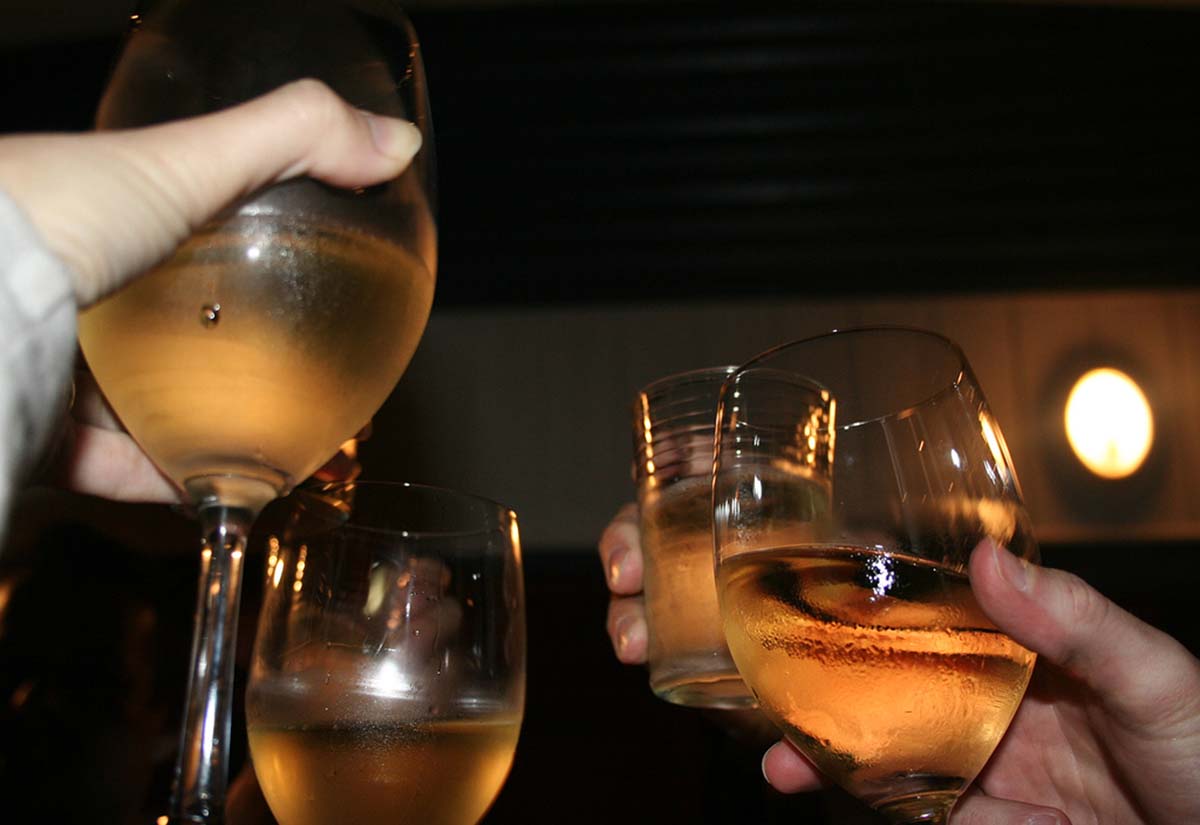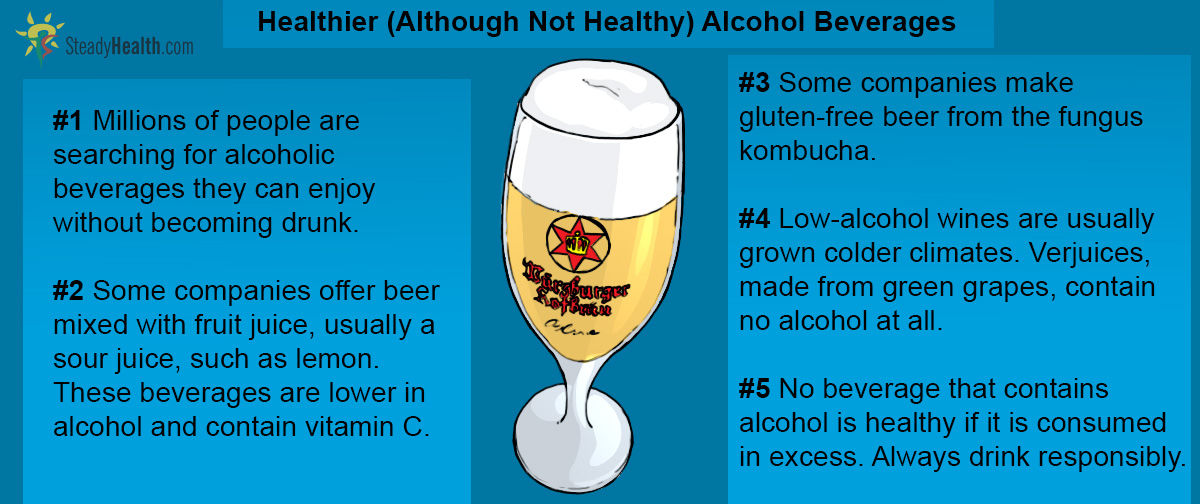Most Americans don't really think of beer as a potential health food. However, beverage manufacturers seeking their share of the highly competitive $206 billion a year American adult beverage market are coming out with a number of imaginative, sometimes delicious, and sometimes just plain odd options for responsible drinkers seeking wholesome, or at least healthier, libations.
More Options Than Just "Lite" Beer
The bestselling alcoholic beverage in the United States, most people will not be surprised to learn, is beer. Sales of beer account for a little less than half of the American alcoholic beverage market in terms of sales, about $93 billion a year, but about 80 percent of alcoholic beverage sales in terms of customer contact, about 80% of all purchases of alcohol including beer.
About half of beer sales reflect an innovation from the 1970's, light beer, also known as "lite" beer. In the UK and Australia, beers are "light" if they contain less alcohol. In these English-speaking countries regular beer contains about 5.5 percent alcohol and light beer just 2.0-2.5 percent. In the United States, light or "lite" beer contains fewer carbohydrates, and therefore fewer calories, but not necessarily less alcohol.
The problem with light beers is that they often taste as if they had been watered down. In making regular beer, American brewers allow the growth of fungi that break down a kind of carbohydrate called dextrin, which the human body cannot digest, into malt sugars, which it can. In making light beers, brewers stop the action of the years to leave more of the indigestible dextrin in the product. This robs the beer of some of its malt flavor, but allows the production of alcohol. In the UK and Australia, brewers may simply dilute beer with water.
Get Tickled, Not Pickled
One of those alternative beers is kombucha beer, made from kombucha tea prepared over an especially long fermentation time. Kombucha is made without grains, so the resulting beer is gluten-free, and the brew contains all of the alleged health benefits of regular kombucha tea. The long fermentation time gives the beer an alcohol content of about 2 percent, which is four to five times more than regular kombucha tea, but about half as much as in regular beer. One kombucha beer, Kombrewcha, sold in New York and Connecticut, invites consumers to "get tickeld, not pickled" with the lowers alcohol content. Lambrucha, which combines Lambric beer and kombucha and has a higher alcohol content, is available in 40 states.
See Also: Liver Disease Isn't Just a Danger For Alcoholics
European beer industry giant Heineken recently introduced Americans to Amstel Radner, a mixture of 40 percent beer and 60 percent lemon juice. It has just 2 percent alcohol by volume along with a hefty dose of vitamin C. Heineken hopes it will bring more women into the American beer market. Amstel Radner contains less gluten than most other beers, but it is not gluten-free. The popular workout drink, coconut water, has been combined with lime juice, tequila, and malt liquor to make Parrot Bay Margarita, which comes in 8-ounce (240 ml) cans. The lime juice in this drink also provides some vitamin C.
Better-for-Your-Body Beverages for Health-Conscious Drinkers
Lower-alcohol options for health-conscious drinkers tend to be expensive, hard to find, and not exactly the thing you might want to serve the guys (or the girls) who come over to play cards or watch a game on television. However, there are some brands that are generally available in the United States that support responsible drinking without sacrificing taste.

- If you are someone who likes to have more than a few beers every night, a low-calorie, low-alcohol option is a better way to go. Bud Select 55, available all over the United States, contains just 55 calories per can, with very little carbohydrate (just 1.9 grams), and only 2.4 percent alcohol by volume. Also low in calories, carbohydrate, and alcohol is Miller 64 which offers 64 calories per serving, the extra calories coming from carbohydrate, and 2.8 percent alcohol by volume. Beck's Premier Light is nearly as low in alcohol, and Amstel Light is among the least expensive of the lower-alcohol beers.
- If you are trying to cut back on beer, it is probably a good idea to avoid Michelob Ultra. This product is not low in alcohol, but it is available in a variety of flavors, such as peach, dragon fruit, and lime. Appetite is stimulated by variety, and the more flavors there are to try, the more of the beer most people will want to drink.
- Low-alcohol wines are making a comeback in the United States, after declining in popularity since the 1990's. If you would like an interesting accompaniment to a meal with no alcohol at all, try a verjuice, made from green grapes. If you'd like a good wine with some alcohol, try varieties made from grapes grown in relatively cold climates (where the grape makes less sugar) such as Germany, the champagne areas of France, or upstate New York.
- Vodka is the lowest in calories (but not alcohol content) of all the commonly consumed hard liquors. It has absolutely no nutritional value, but it is not, relatively speaking, "fattening." Many social drinkers find that is easier to pace themselves when they drink vodka because it is boring, there is little variation in taste unless it is added to the drink.
- Whiskey has interesting flavors that stimulate consumption. The more exotic the flavor notes, generally the more you want to drink. If you are trying to cut back on drinking, choose beverages other than whiskey.
See Also: Wine Not? The Health Benefits And Dangers Of Your Wine Drinking Habit
It is important to understand that when it comes to alcoholic beverages, "healthy" is only a relative term. The body treats alcohol as a toxin. No health authority recommends that women consume more than one drink a day, or that men consume more than two. Even alcoholic beverages with proven health benefits, such as red wine, are harmful if consumed in excess, and some people should not consume alcohol at all. However, if you are looking to minimize the damage done by drinking, healthier beverages offer taste and variety with lower risk of inebriation and organ damage. Always drink responsibly.
- Kasper LR. The lowdown on low-alcohol wines. Splendid Table. http://www.splendidtable.org/story/the-lowdown-on-low-alcohol-wines. Accessed 18 February 2015.
- Robinson R. The Nine Healthiest Alcoholic Drinks. Gizmodo.http://gizmodo.com/5925820/the-nine-healthiest-alcoholic-drinks. Accessed 18 February 2015.
- Mind map by SteadyHealth.com
- Photo courtesy of Melalouise via Flickr: www.flickr.com/photos/melalouise/341692249



Your thoughts on this